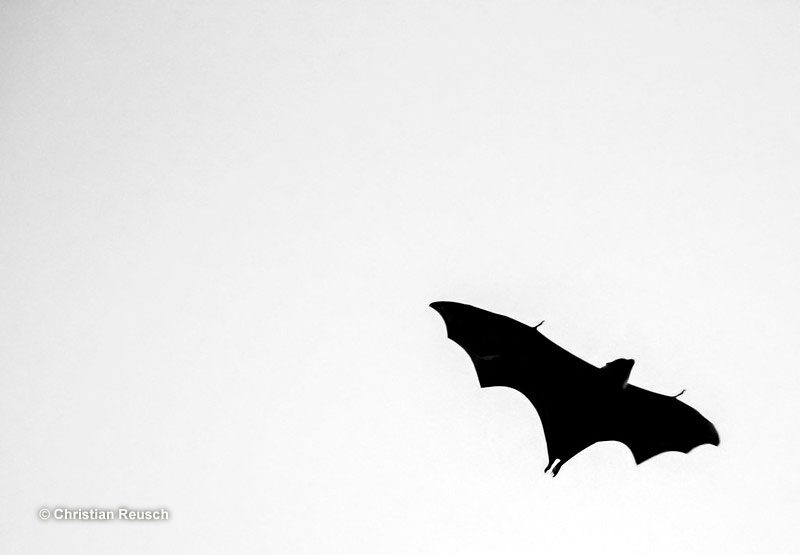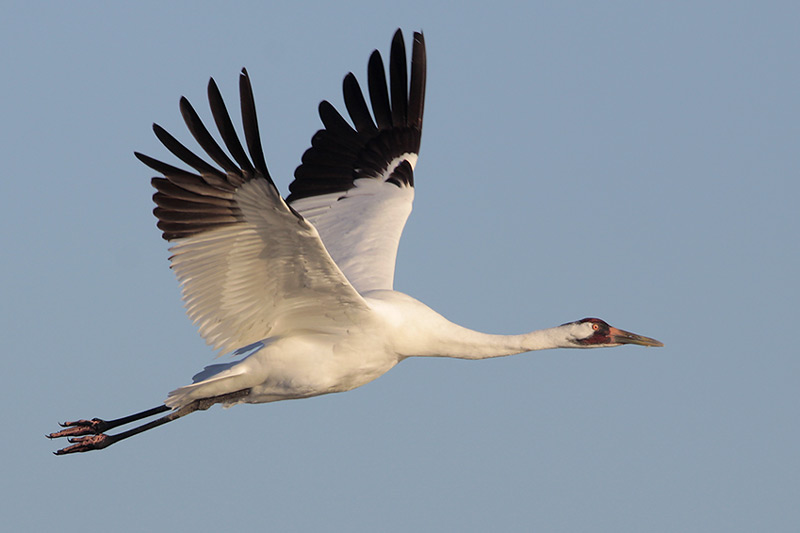
Most birds fly but they aren’t the only animals with wings! When I go birding in the evening, I often see another animal that flies, too. Just after most of the birds have gone to roost, bats flutter into my field of view.
Some people are scared of bats, but they shouldn’t be. These little flying mammals help us by eating insects and other bugs. They can also be really cute!
Since bats can fly, people often wonder if they are related to birds. Do bats have anything to do with birds? How are they able to fly?
On this page
Are Bats Birds?
Bats can fly and occasionally be confused with birds, but they are a completely different type of animal. While birds are in the avian class, bats are in another class; the mammals. Yes, even though bats can fly very well, they are much more closely related to mice, horses, monkeys, cats, and other mammals than they are to birds.
Bats are so distinctive that they are also classified in their own order, the Chiroptera. Despite their appearance, these animals aren’t just “flying mice” either. In fact, DNA studies have shown that bats are more related to carnivores and shrews than rodents!
Learn more: Bird orders & classifications
Like other mammals, bats are warm-blooded, nurse their young, and have fur. While birds are also warm-blooded, they lay eggs and have feathers. However, unlike any other mammal, bats evolved the ability to fly! While some other mammals can glide, none can flutter around and fly like bats do.
Fossil evidence shows that bats have been around for at least 50 million years and that those early bats probably flew a lot less than modern bats. However, bats eventually evolved smaller, lighter bodies, and stronger wing membranes to help with flight. Those wing membranes have enough surface area to push against the air and keep bats aloft.
Are bats and birds similar?
Bats and flying birds have some similar adaptations related to flight. Both types of animals have light bones that make it easier to take to the air and keep flying. Since conquering gravity requires a lot of energy, bats and birds also have very efficient respiratory systems. To keep their flight muscles going, they need a good, constant supply of oxygen.
Although both have wings, bird and bat wings are pretty different. Instead of using overlapping feathers, bats have a specialized wing membrane stretched between elongated and flexible digits.
This wing membrane is thin but strong enough to push against air and help the bat fly.

A bat’s wing membrane can also sense changes in air currents and other factors to help the bat fly in a variety of conditions. These factors also make bats very flexible. In fact, most have more flexible and agile flight than birds!
Some small, nectar-feeding bats also have buzzing wing beats reminiscent of hummingbirds. Although they can’t fly as well as hummingbirds, they can hover and zip around from flower to flower!
While bats aren’t as aerodynamic as many birds, they have enough aerodynamic capabilities to fly with ease. They also make up for it with their agile flight.
Are there any other animals that fly?
Other animals have also evolved the power of flight. In prehistoric times, pterodactyls glided and flew around with wings somewhat like those of bats. However, in addition to birds, the most common type of flying animals are insects.
Although we take them for granted, there are thousands of insects that can fly, some of them with great agility. It may have been easier for insects to evolve flight because they don’t weigh much and have an exoskeleton instead of heavy bones.
They fly with specialized wing membranes, and most fold their wings back over their body when resting. Two exceptions are dragonflies and butterflies. These pretty insects hold their wings out from their sides and upright.
In modern times, the only animals with true sustained flight are birds, insects, and bats.
However, several other animals can almost fly. In North America, flying squirrels glide from tree to tree in the dark of the night. In some places, they might glide to your bird feeder!
There are also gliding marsupials in Australasia, and several Asian lizards that glide between trees. In the tall rainforests of southeastern Asia, there are even snakes that can leap from a high tree and glide to lower branches!
The Similarities & Differences – Some Fun Facts
- The fastest bat is the Mexican Free-tailed Bat. This bat can fly as fast as an incredible 100 miles per hour!
- Many bats use echolocation to maneuver and find prey. There are just a few cave dwelling birds also known to use echolocation. These are the Oilbird of South America and some swiftlet species that live in southern Asia.
- Thanks to their flexible wings, bats have more efficient flight than birds.
- Like hummingbirds and some other birds, bats can also enter into torpor, a form of temporary hibernation.
- The biggest bat cave in the world is the Bracken Bat Cave in Texas. Over 20 million bats live there and while foraging, they can eat more than 200 tons of bugs in one night! In turn, these bats are preyed on by Red-tailed Hawks and other raptors.
- Bats are known to sleep upside down. To add to the confusion, some birds can hang upside down too! The most common example for us is nuthatches, but they forage on the sides of the trees. But there is a family of hanging parrots that live in Asia.
- To sustain their high energy flight needs, like hummingbirds, bats need to eat a lot. One bat can eat 600 bugs in just one hour!
- The biggest bat in the world is the Golden-crowned Flying Fox of the Philippines. This huge, fruit-eating bat can have a wingspan that measures more than five feet!
- There are 1,400 species of bats, around 20% of all mammals.
Frequently Asked Questions
Why are bats, not birds but mammals?
A bat is a mammal and not a bird because it has fur instead of feathers, and gives birth instead of laying eggs.
Is it easy to confuse a bat for a bird?
With a poor look, a flying bat can look like a bird. However, bats have more fluttering flight and a different shape than birds.
How similar are bat wings to bird wings?
Bat wings and bird wings are not that similar. Bat wings have a specialized skin membrane stretched between five elongated digits, while birds have feathers that grow out of the main bones in their wings. Even the bone structure is different.
How fast do bats fly?
Most bats don’t fly very fast. The average flight speed for many bats is just 10 miles an hour. However, some bats do fly faster, including the Mexican Free-tailed Bat, a species that can reach speeds of 100 miles per hour!

